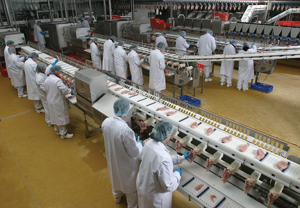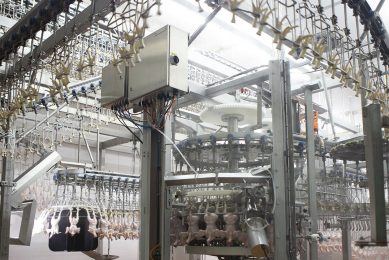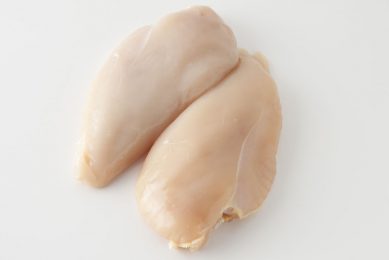New filleting solutions from Marel Stork

For years now, flexible modular Marel Stork Poultry Processing systems for filleting front halves (FHF system) or breast caps (AMF system) have been on the market. Continuous upgrading have kept these systems up-to-date. A review on recent developments in this field.
The basic principles for developments in filleting, which over the past twenty five years have led to today’s filleting solutions, have always been the same: making end products according to market demands and of the best possible quality with an optimum fillet yield. Both the FHF front half de-boning system and the AMF breast cap filleting system have worldwide been well accepted over the years, and have continuously been upgraded to meeting these demands.
More flexibility and higher yields
Many of the breast cap filleting systems installed, have since been upgraded with the latest technological developments. Besides more product options, improved performance is the main feature now also offered by the modular filleting system. With the control by menu recently introduced, it is now easy to tune individual modules from a centrally located PLC to the best setting for the various sizes of breast cap.
This means for example that it is possible to take full advantage of changing weights during production with optimum yields as a result. The system will also point up any maintenance needed by the units. This can be carried out in good time and performance of the whole line will remain at an optimum level. Another new development, to be introduced soon, will lift overall performance still further.
Harvest fillet products automatically
The FHF-XB front half filleting system has seen similar development work. In recent years new modules have been added and existing ones further developed. This has resulted in an increase in the number of product options with higher yields and less manual operations. After front halves have been loaded on the flexible product carrier, all kinds of operations can be carried out depending on the desired end products. Without any human input and achieving high yields, the FHF lays automatically harvested product, half fillets being an example, in pairs on a belt conveyor. From there they can be processed further.
Scanning for bone-free products
A possible further step is the scanning of fillets for bone remnants. Being able to deliver bone-free fillets is becoming important for more and more sectors. Scanning fillets can be an interesting step for adding value to them. Increasingly, the food service sector is making the use of a scanner for guaranteeing bone-free products a requirement and in this is done by the Sensor X developed by Marel.
Optimising in-line logistics
According to the in-line philosophy of Marel Stork Poultry Processing, the FHF fillets are presented automatically for inspection conveyed on different belts. Only those fillets which need trimming are touched and worked. Product not needing trimming is conveyed automatically into the scanner. Should this be necessary, fillets are presented, once again automatically, to an operator, who puts them back into line after trimming, so that they can be conveyed to a subsequent processing step. For this, various types of conveyor belts are available, which can turn fillets in any direction.
Related website:
Marel Stork Poultry Processing













